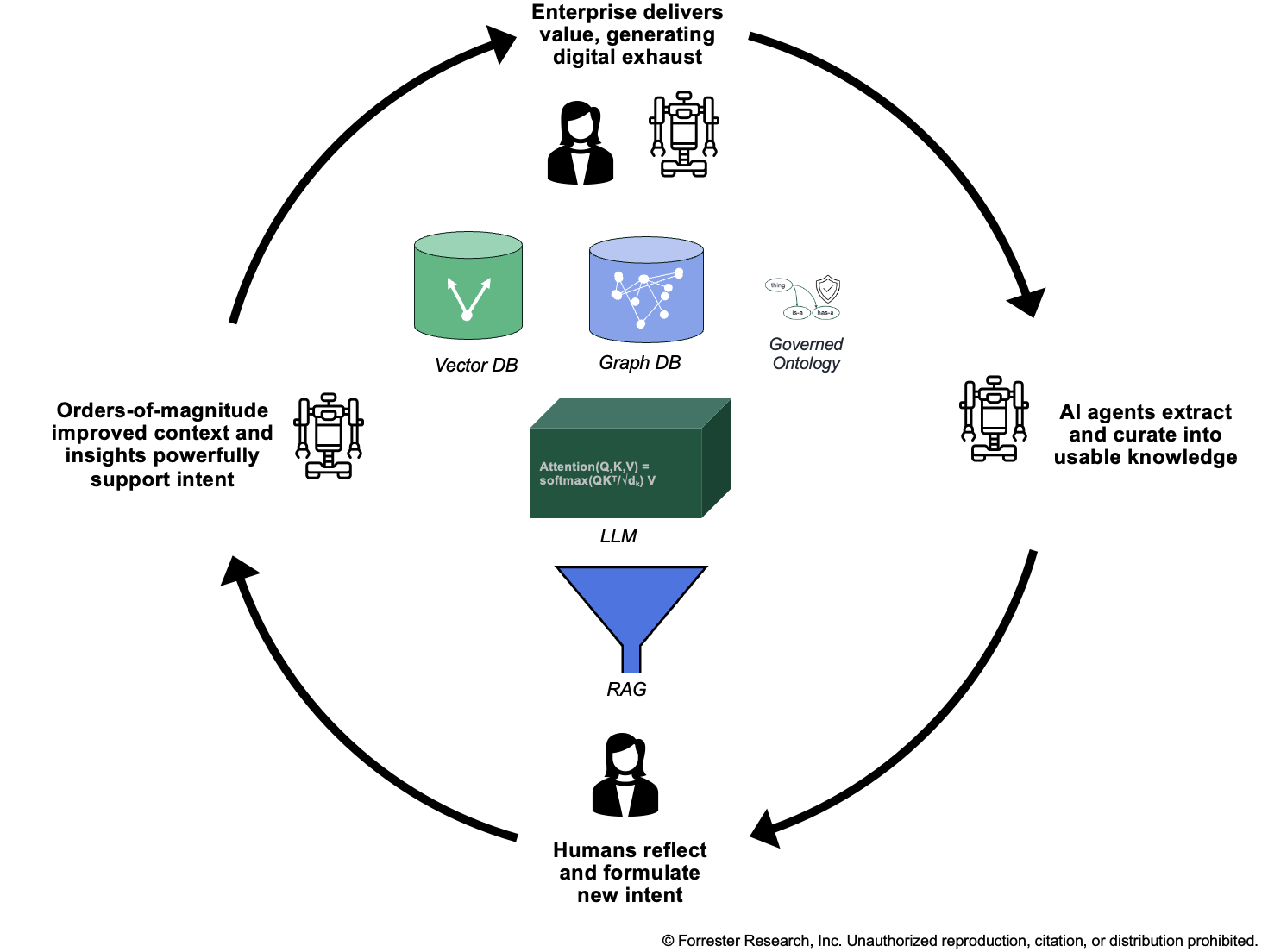The Sleeping Giant Awakens: Defining IT’s Role In A Seismic Shift
Every few decades, something fundamental shifts in IT, not just in what we deliver but in how we think about delivering it. Over the past few years, generative AI has done more than captivate headlines — it has woken a sleeping giant: the long-overdue dream of continuous, intelligence-driven improvement in enterprise operations. And this August at Forrester’s Technology & Innovation Summit APAC in Sydney, I’ll be presenting a keynote to argue that IT is poised to lead, not follow, this transformation.
Why did I choose the metaphor of a “sleeping giant” to describe this shift? Because the foundational concepts have always been with us: continuous improvement, knowledge management, feedback loops, and so forth. But until now, they’ve been too brittle, too fragmented, and too limited by human capability to scale.
Now, generative AI paired with graph data and AI agents offers a new control plane for the digital enterprise. This keynote will explore how these new capabilities are reshaping how we manage IT, govern change, and close the gap between architecture intent and operating reality.
A New Paradigm
To really put this shift in context, I began to ask some “big” questions. What if IT’s core responsibility isn’t just delivering services but designing and optimizing the enterprise’s learning loops? What if every ticket, every log file, every artifact in the digital exhaust becomes a signal for improvement?
That’s the potential we’re seeing emerge. The convergence of vector databases, retrieval-augmented generation (RAG), knowledge graphs, and autonomous agents is not just theoretical — it’s rapidly becoming operational, and I see increasing evidence of this every week in my work with clients.
At the keynote, I’ll share what this looks like, including live examples of how generative agents are already supporting architecture workflows, risk analysis, and technical debt remediation.
From Episodic Oversight To Real-Time Intelligence
In the old world, architects reviewed changes in periodic meetings, using static documents and informed by stale data. In the new world, the architecture is operational — it’s enriched by telemetry, backed by graph models, and interpreted in real time by AI agents.
We’ve entered the age of the architecture operating system: a continuously updated graph of the enterprise where agents harvest data, identify issues, and react with the full context of integrated enterprise knowledge. The learning loop, long fragmented and attenuated, is being knitted together and accelerating.
This is more than automation — it’s augmentation. And it demands a rethinking of enterprise roles, tools, and platforms.
Ownership Matters: Who Controls The Graph?
A major theme of my recent work has been the battle for control of IT’s knowledge graph. Vendors are racing to embed graph capabilities into their platforms. ServiceNow, Atlassian, SAP, Salesforce, Microsoft, and many more are all vying to become the authoritative source of truth.
But the real question is: Will you govern your graph or be governed by someone else’s?
The knowledge graph and associated ontology — and the agents acting within them — is fast becoming the new strategic battleground for digital leadership. Owning that structure means owning the rules through which change happens, risks are evaluated, and AI is trusted.
Your Invitation To A New Era
To be clear, this isn’t the introduction of a framework. It’s an invitation to a fundamentally different way of thinking about IT’s role: as a steward of intent and intelligent control, not just a provider of capacity.
If you’re in IT strategy, architecture, finance, operations, or digital leadership — or simply wondering how to steer your enterprise through the noise — this keynote is for you. We’ll unpack what’s real, what’s hype, and how to get started.
The sleeping giant is not just awake. It’s reasoning. It’s learning. It’s ready. Join me at Technology & Innovation Summit APAC in Sydney, and let’s explore how to lead, not follow, this moment.

